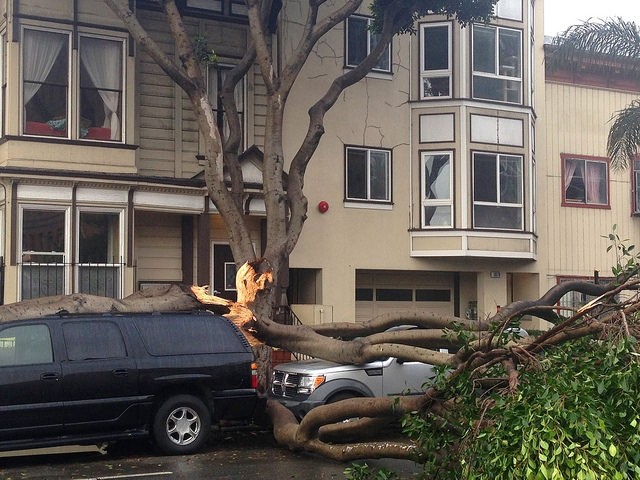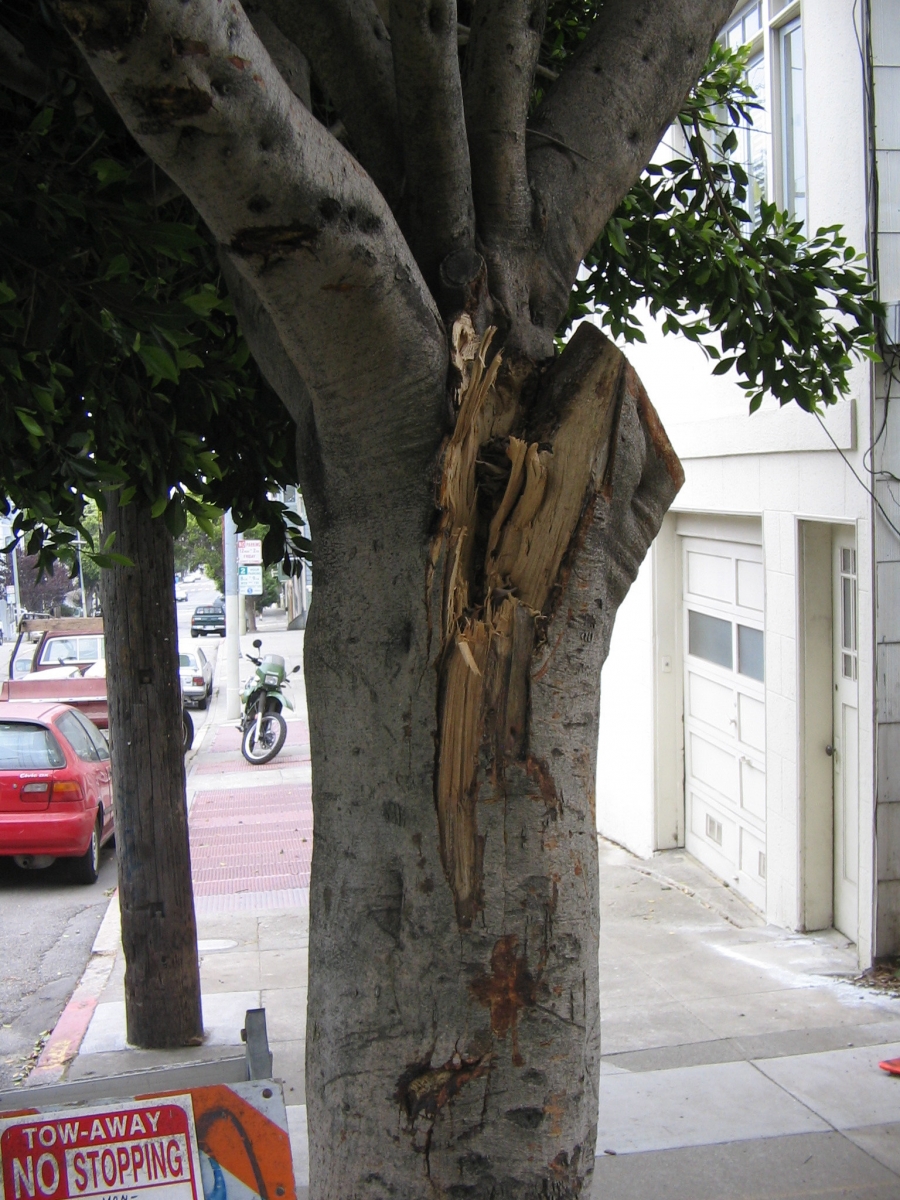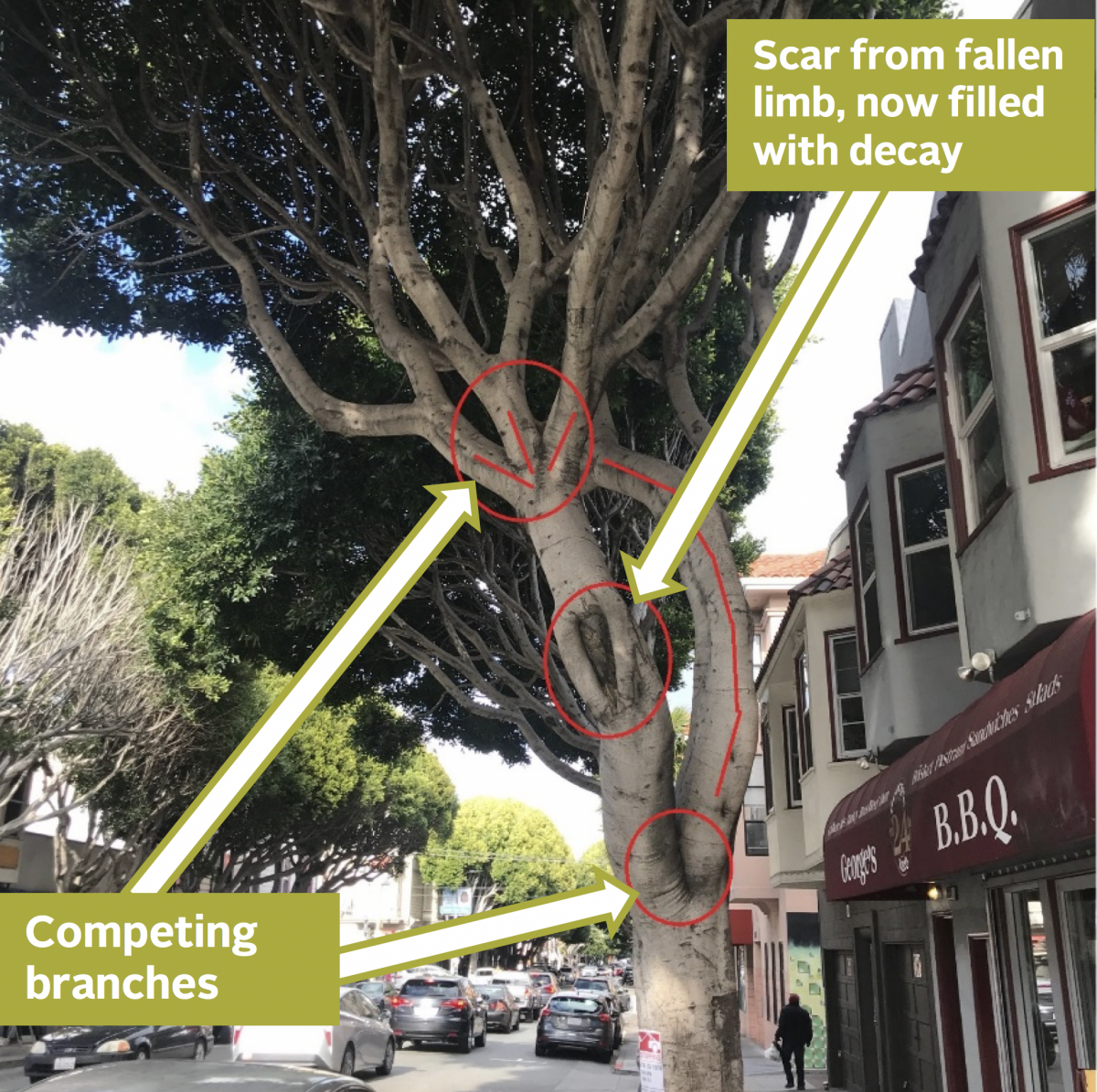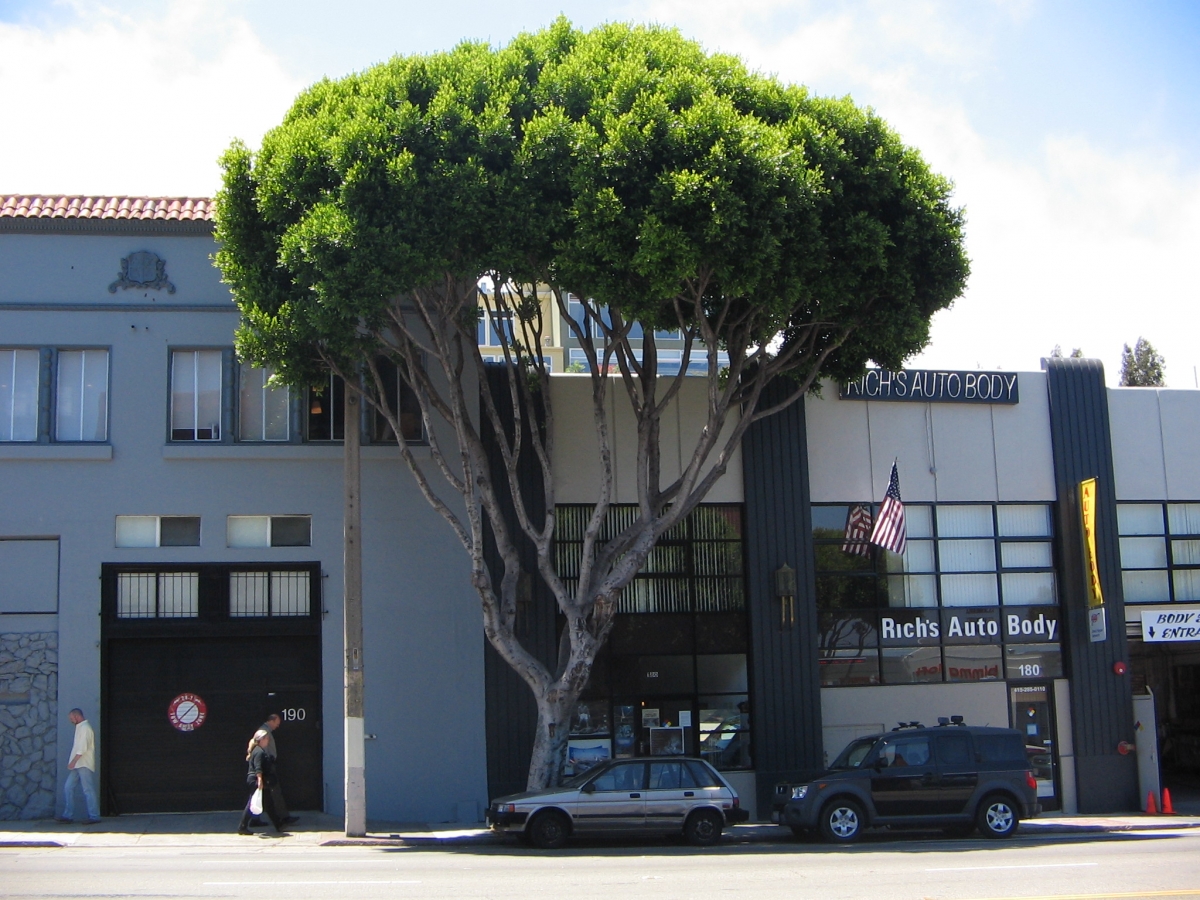  | |
| Ficus limbs torn from tree due to competing branch structure. |
  | |
| Ficus with split trunk caused by a limb that fell due to competing branch structure (front and back view). |
 |
| Additionally, the roots of ficus trees can cause severe damage to sidewalks, making them buckle and creating tripping hazards. The roots also can damage other infrastructure, such as curbs and roads. |
What this all means
Areas scheduled for ficus removal*
| Area | Streets | Number of ficus posted for removal | Posting period |
Hayes Valley
| Octavia Street from Hayes to Fulton streets | 28 | January 11, 2019 – February 10, 2019 |
| Hayes Valley | 501 Octavia Street | 1 | January 11, 2019 – February 10, 2019 |
| Lower 24th Street | Mission to Potrero streets | 51 | May 3, 2019 – June 1, 2019 |
*Please note, schedules are estimates and are subject to change for numerous reasons. Please check back periodically as we continue to update information based on the latest data collected in the field.
Hayes Valley Information and Updates
Lower 24th Street Information and Updates
Public Works has been conducting outreach regarding the Lower 24th Street ficus removal and replanting project. Below you will find materials that were shared at each outreach event.
Community Meeting #1 – March 20, 2019 6:30 PM
Zuckerberg San Francisco General Quarterly Meeting
- Flyer (English, Spanish, Chinese)
- ZSFG Community Meeting Agenda
- Lower 24th Street Ficus Trees presentation
Walk-through and Community Meeting #2 - April 22, 2019 6:00 PM
Silverstone Café and Alley Cat Bookstore and Gallery
- Flyer
- Lower 24th Street Ficus Tree Walk Thru Welcome and Notes
- Lower 24th Street Ficus Trees Q&A
- Lower 24th St. Ficus Trees Assessment
- Lower 24th Street Ficus Removal Criteria Examples
- Lower 24th Street Ficus Tree Numbers
Final Lower 24th Street Ficus Information
Frequently Asked Questions

- The canopy is in decline. This condition is concerning for ficus trees because unlike other tree species, it is difficult to revive and save a ficus canopy when its canopy has begun declining from disease.
| Declining Canopy | Healthy Canopy |
 |  |
 |  |
- The amount of live crown (canopy) given the overall height of the tree is less than 30 percent. While the tree shown below may look healthy, its live crown makes up less than 30 percent of its overall structure. Various past pruning practices have left many ficus trees with a less-than-ideal live crown size. This minimal live crown structure adds weight to the top and increases the likelihood of limbs falling because they are unable to support the weight of the tree.







